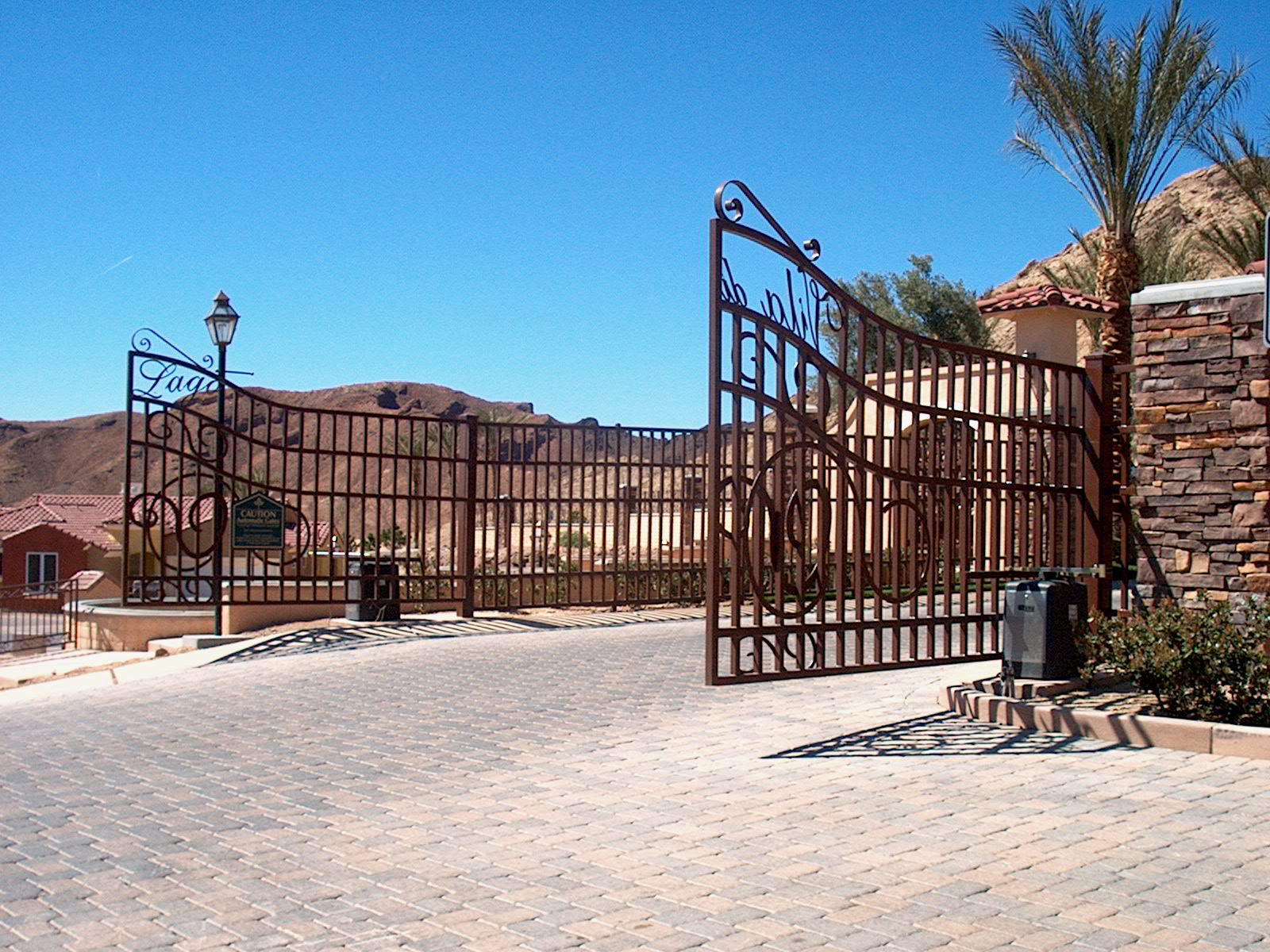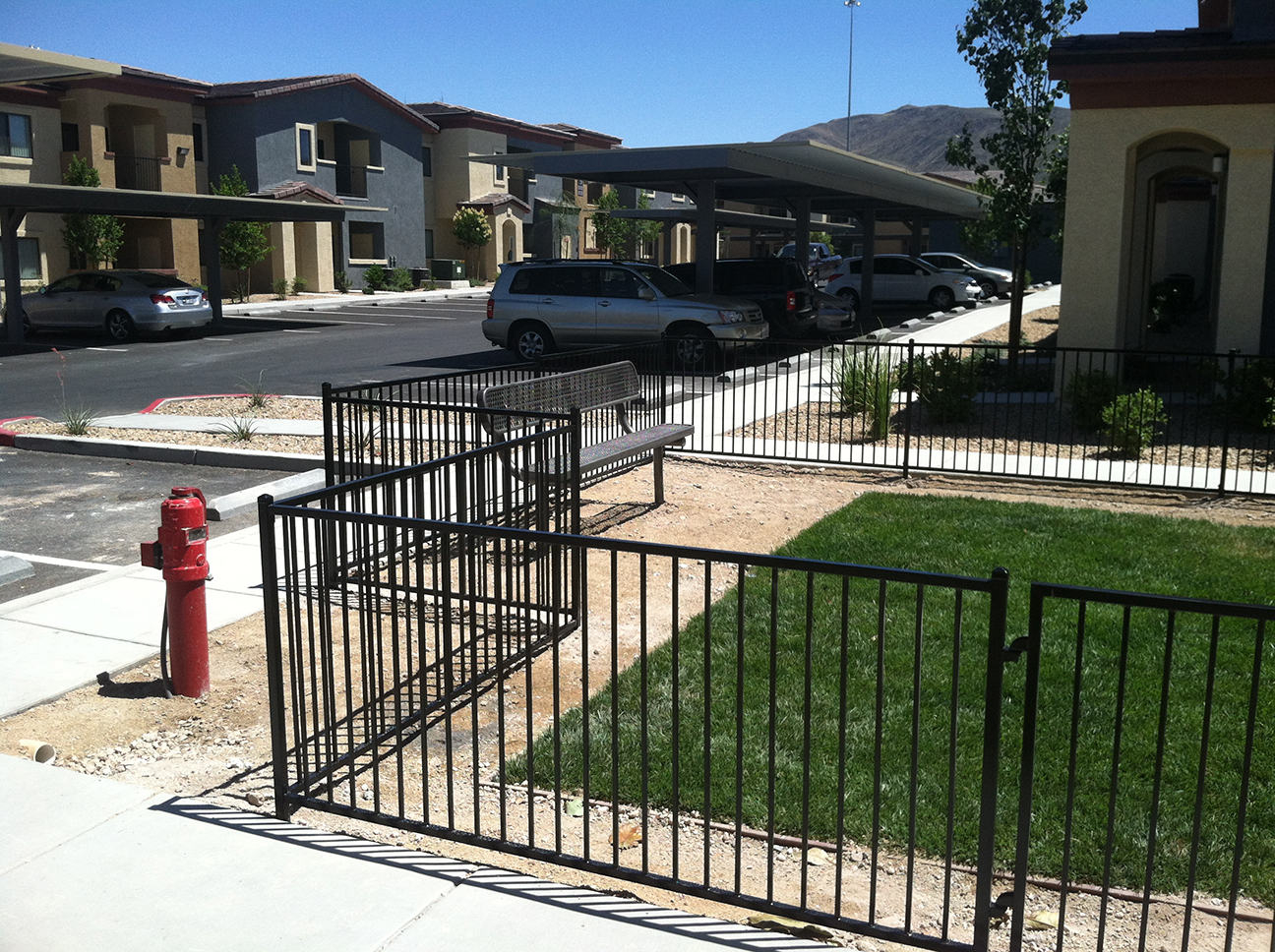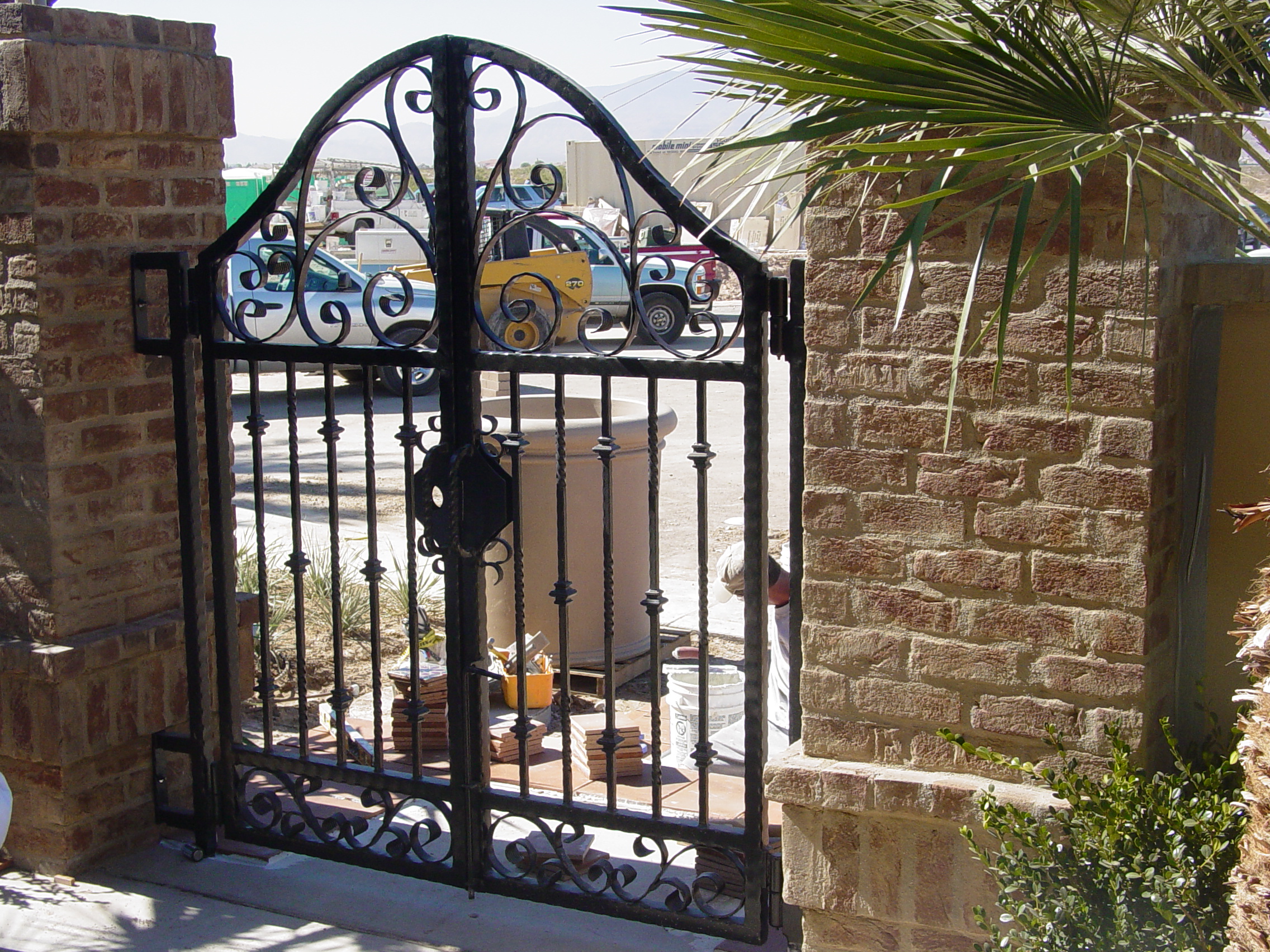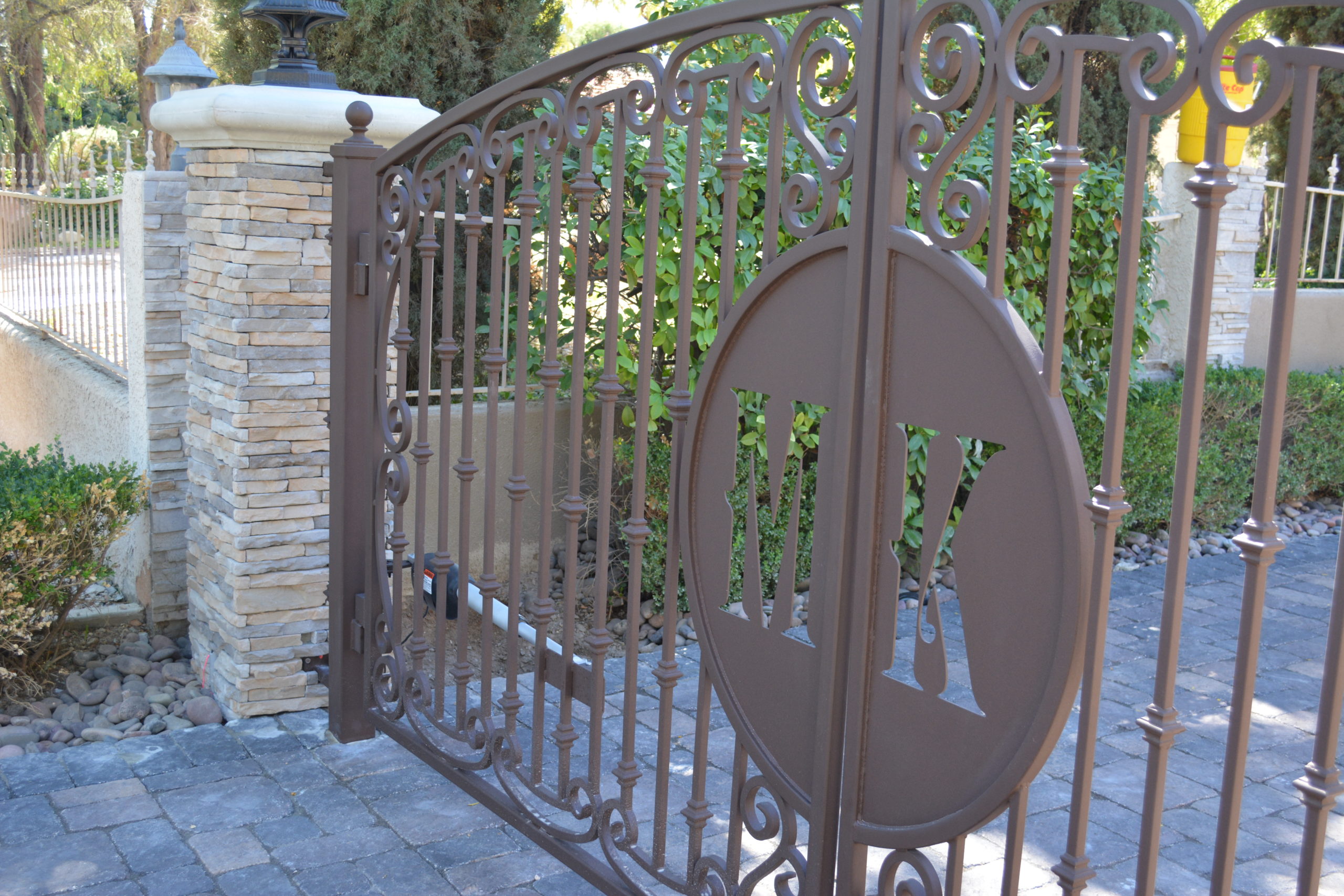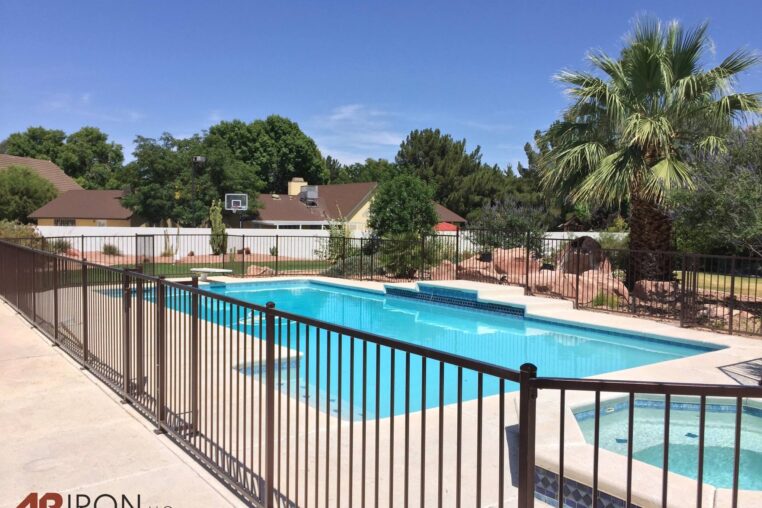
6 Steps to Make Your Pool Safe for Children
Keeping your pool safe for children is crucial to prevent accidents and ensure peace of mind. By following these seven steps, you can create a secure pool environment that protects your loved ones. From installing sturdy fencing to educating children about water safety, each step is designed to minimize risks and enhance safety.
Step 1: Install Proper Fencing
Installing a sturdy, ornamental iron fence around your pool is essential for preventing unsupervised access by children. Iron fencing offers strength and durability and adds an aesthetic appeal to your pool area.
Did You Know?
|
Clark County Pool Safety Regulations
In Nevada, pool safety regulations are stringent to prevent accidental drownings, especially among children. Here are the key requirements for pool fencing according to the 2018 International Swimming Pool and Spa Code (ISPSC):
- Height and Spacing: Fences must be at least 48 inches tall. This can vary slightly with some municipalities requiring up to 60 inches. The spacing between the ground and the bottom of the fence should not exceed 2 inches to prevent small children from crawling underneath.
- Fence Design: The fence must not have protrusions or any design features that could be used as footholds, making it harder for children to climb. Horizontal cross supports should be no more than 1 inch above the ground, and the fabric or mesh used must not be liftable over 4 inches from the ground.
- Gates: Gates in the pool fence must be self-closing and self-latching, with latches placed at least 60 inches off the ground and opening outward away from the pool area.
- Materials: Various materials are allowed, including mesh with holes smaller than 1 ¾ inches, chain link with openings not exceeding 1 ¾ inches in any dimension, and welded wire with spacing between vertical wires not exceeding 1 ¾ inches.
It’s recommended, though not mandated by regulations, to consider additional layers of protection such as pool safety covers compliant with ASTM F1346 standards, providing an extra safeguard when the pool is not in use.
Step 2: Use Self-Closing and Self-Latching Gates
Self-closing and self-latching gates prevent unsupervised access to your pool area. These gates automatically close and latch, ensuring the pool remains secure even if someone forgets to shut them. For added safety, install latches high enough to be out of children’s reach, preventing them from opening the gates themselves.
This combination of self-closing and self-latching mechanisms provides a reliable safety barrier, significantly reducing the risk of accidental drownings by keeping children away from the pool unless supervised. Implementing these features helps maintain a safe environment, giving homeowners peace of mind that their pool is secured at all times.
Step 3: Implement Pool Alarms
Enhancing pool safety includes installing alarms that trigger alerts for any unauthorized access or disturbances. Here are a few types of effective pool alarms to consider:
- Perimeter Alarms: These create an invisible barrier around the pool area. If a child crosses the barrier, the alarm sounds, alerting you to the potential danger.
- Surface Wave Detection Alarms: Installed on the pool deck, these alarms monitor water disturbances and alert you if there’s unexpected movement in the water, such as when something or someone enters the pool.
- Gate Alarms: Attached directly to your pool gate, these alarms sound when the gate is opened unexpectedly, helping prevent unsupervised access.
- Wearable Alarms: Children can wear these devices, which activate an alarm when submerged in water, directly monitoring the child’s safety.
These alarms serve as an essential alert system, notifying you immediately if someone enters the pool area or if there is movement in the water, potentially saving lives by allowing for rapid response to possible drowning incidents.
Did You Know?
|
Step 4: Maintain Clear Visibility and Remove Obstacles
Maintaining clear visibility in and around your pool area is crucial for ensuring safety. Keeping the pool surroundings free of toys, floats, and other objects that might attract unsupervised children is important. Objects left near or in the water can entice children to enter the pool area without adult supervision, increasing the risk of accidents.
Additionally, it is vital to ensure that the water is clear and free of obstructions. Murky water can obscure the pool’s bottom, making it difficult to see if a swimmer is in distress or if there is an obstruction that could pose a hazard. Regular maintenance to check and balance pool chemicals and clean the water will help keep it crystal clear and safe for use.
Step 5: Educate and Supervise
Education and vigilant supervision are key components of pool safety. Teaching children about pool safety rules is a fundamental step in preventing accidents. Children should understand the dangers associated with water and learn behaviors that maintain safety, such as not running around the pool, not diving into shallow water, and never swimming without adult supervision.
Constant adult supervision is crucial whenever children are in or near the pool. An adult should always be present, actively watching children during pool activities, ready to intervene immediately if necessary. This means staying focused on phones, social gatherings, or other activities that might take attention away from watching the children. Designating an adult as a “Water Watcher” can help ensure that at least one person is always focused solely on monitoring children’s safety while they are in the pool area.
Step 6: Regular Maintenance Checks
Regular inspections and maintenance of your pool and its safety features are essential to ensure they remain effective in preventing accidents. Conducting routine checks helps identify and address any wear and tear or potential hazards before they become serious issues.
Inspect the pool fence, gates, and alarms regularly to ensure they are in good working condition. Look for signs of rust, loose bolts, or any other damage that could compromise their effectiveness. Make sure that gates are self-closing and self-latching properly, and test alarms to confirm they are functioning correctly.
Ensure Child Safety with AR Iron’s High-Quality Pool Fencing
Creating a safe pool environment is essential to protect children from accidents. Implementing sturdy fencing, self-closing gates, pool alarms, clear visibility, education, supervision, and regular maintenance are critical steps.
For high-quality ornamental iron fencing that meets all safety standards and enhances your pool’s appearance, contact AR Iron. Act now to make your pool a safer place for your family!

